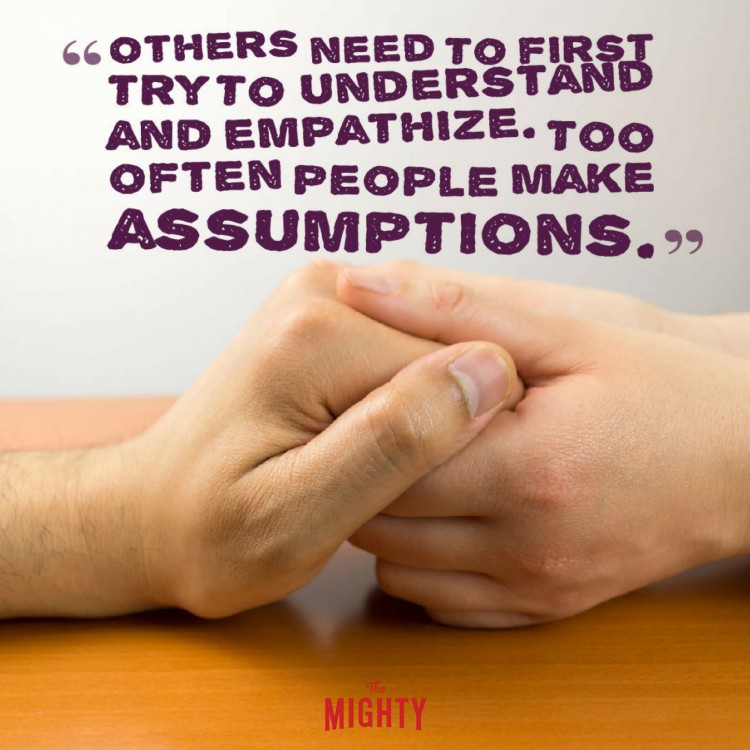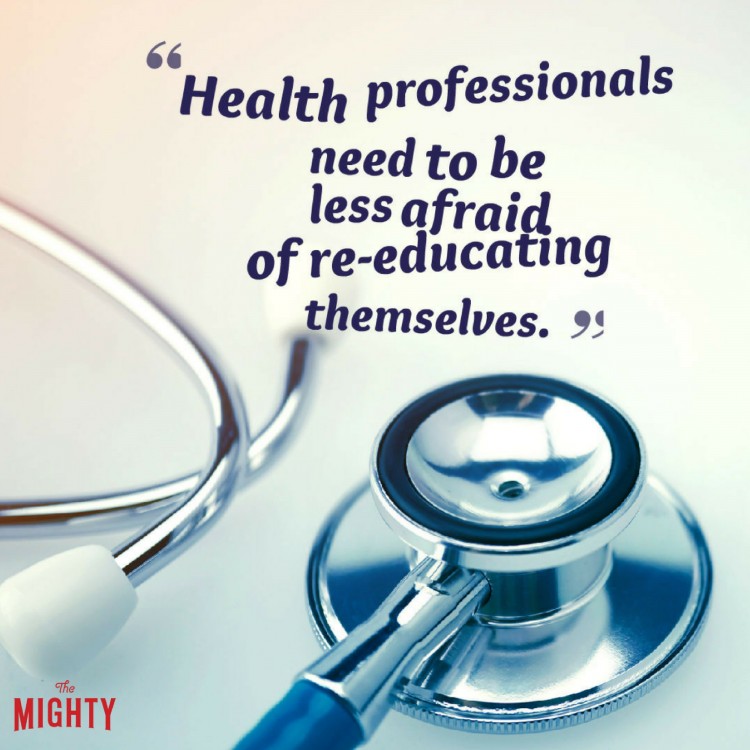Each year, people with invisible disabilities and their loved ones come together for Invisible Disabilities Week, a time to educate the general population about the challenges they face and the progress society still needs to make towards acceptance. It’s a time to break down the belief that people with invisible disabilities are “exaggerating” or “faking” their symptoms, and start a discussion about what inclusion really means. So this week, the community works to raise awareness of their invisible conditions and how their conditions affect their lives, as well as offer their recommendations for how to make the world a more inclusive place.
We partnered with the Invisible Disability Project to ask our communities what families, friends, employers, health professionals and educators can do to reduce the shame and stigma that surrounds invisible disabilities. By listening to these requests, people can help break down the barriers that affect the invisible disability community.
Here’s what they said:
1. “To start any conversations there must be people to listen… We have lost too many soldiers in this struggle trying to get a seat at the table in the discussion about our own lives.”
2. “I really wish people would respect us enough to ask, ‘What is your condition called? Do you mind telling me about it?’ Or research it! If you don’t know anything about my illness, asking and educating yourself is a lot better than jumping to assumptions or just tiptoeing around it.”
3. “Don’t actively give medical advice if we don’t ask for it. The practice of offering unsolicited advice implies we aren’t already doing all we can. It adds to the idea that we aren’t trying hard enough.”
4. “Others need to first try to understand and empathize. Too often people make assumptions about what you are and are not capable of doing, both positively and negatively identifying someone as less than or more capable than they are at any given time.”

5. “Stop treating us like we have some kind of character flaw just because we don’t want to experience excruciating pain every single day. We didn’t choose our illness(es) and we don’t deserve judgment for doing whatever it takes to try to live a normal life that healthy people take for granted.”
6. “Don’t assume because we look fine that we are. We’ve gotten very good at not showing when we’re in pain — since that’s all day every day.”
7. “I wish family and friends would include me in activities. I do feel lonely and left out, like no one cares about what I care about, no one wants to even hear me talk or even know what it is I have to express.”
8. “A person who is using an aid for mobility whether it’s a cane, wheelchair, or scooter needs that device to function. The person may be able to stand or walk short distances, but that is her/his business, and no one should make a judgment about the level of that person’s disability.”
9. “The teachers and counselors in our schools need to be educated about invisible disabilities. They need to learn about the pain involved and not have stigmas about the medications that are involved. Also there needs to be understanding of the modifications involved with them. They need to create presentations that all schools need to see to educate the students and teachers.”
10. “Spread more awareness, especially [among] health officials and the government. Teach people that not everyone has to look like they are dying to have a serious illness. Teach people more about these illnesses, not just the ones that are common.”
11. “Listen to the symptoms. I mean really listen. Don’t judge based on clinical presentation. Use a different pain scale as people with chronic pain/illness tolerate a hell of a lot more then what healthy people do.”
12. “Health professionals need to be less afraid of re-educating themselves. I feel like it should be mandatory for physicians to take a course on chronic illness management every 10 years or so… medical professionals shouldn’t be intimidated when their patients know more about their own illness than they do, especially when it’s a rare disease.”

13. “For my son’s school staff: if you have questions, ask! I’m an open book, and have never been secretive about his struggles. The more people who are aware, the more help he can get!”
14. “Chronic illness patients are experts in their conditions. We need to be a team. Let’s take our unique perspectives and qualifications and work together, not against each other.”
15. “Understand that every single action or lack thereof requires extreme planning. Is there a restroom, will I have to stand, how far will I have to walk, how long will I be in pain if I participate, what medications do I need to bring?”
16. “The Social Security Disability system in the U.S. needs major updating and training from the policies to the employees. It’s humiliating and degrading to have x-rays, MRIs and CT scans plus doctors’ notes documenting your condition and all the meds you take and yet still have to beg for help from a system I’ve paid into nearly my whole life.”
17. “[Create] an environment where management takes the lead in respecting invisible disabilities equally to visible ones. I am blessed to work for employers whose owner will stack heavy boxes for me right next paid employees.”
18. “Think about who isn’t in the room and what they might need if they were. Don’t act like accommodations are an inconvenience.”
19. “Speak up and be an everyday advocate for people with invisible disabilities. For example, if you hear a friend criticize someone for using a wheelchair one day and walking the next, explain the variability of these disabilities from day to day.”

